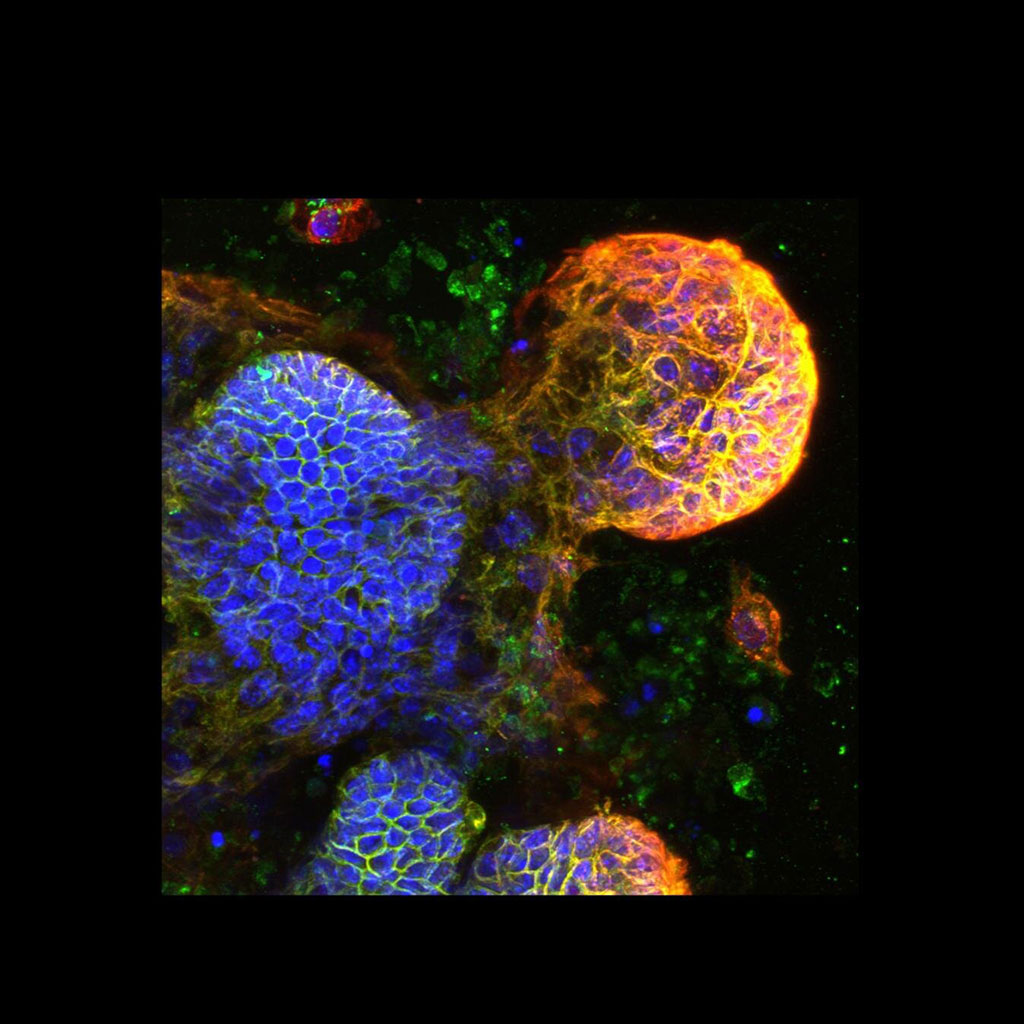Circulating Tumor DNA Following Surgery Predicts Colorectal Cancer Recurrence
By LabMedica International staff writers
Posted on 14 Jun 2021
According to a recent paper, levels of circulating tumor DNA (ctDNA) – which can be measured using noninvasive liquid biopsy – predict the likelihood of recurrence of colorectal cancer following surgery.Posted on 14 Jun 2021
Previous studies have shown that ctDNA analysis, as a marker of minimal residual disease, is a powerful prognostic factor in patients with nonmetastatic colorectal cancer (CRC).

Image: Crypts and buds in the small intestine and colon (Photo courtesy of Dr. Maree Faux, Walter and Eliza Hall Institute)
In this regard, investigators at the Walter and Eliza Hall Institute (Melbourne, Australia) performed a validation study to confirm the prognostic impact of postoperative ctDNA in resectable (treatable by surgery) colorectal liver metastases (CRLM) observed in a previous discovery study.
For this study, the investigators used a liquid biopsy approach, based on the Illumina (San Diego, CA, USA) Safe-sequencing system (Safe-Seq). Safe-Seq assigns a unique identifier (UMI) to each template molecule and amplifies each uniquely tagged template molecule to create UMI families. The abundance of each UMI can be used to distinguish between rare mutations and technical errors and it can also be used to correct for PCR amplification bias.
In the current study, the Safe-Seq-based liquid biopsy was used to evaluate 54 patients with resectable CRLM to confirm the ability of postoperative ctDNA to detect microscopic residual disease and predict relapse. The investigators also analyzed serial ctDNA during and after chemotherapy.
Results revealed that ctDNA was detected in 24% of patients immediately after surgery, and these patients had a very high recurrence risk of 83% compared to only 31% in those with undetectable ctDNA after surgery. All patients with detectable postoperative ctDNA who failed to clear their ctDNA following adjuvant chemotherapy experienced recurrence, while 67% of patients whose ctDNA became undetectable after chemotherapy remained disease-free.
"What we found is that if ctDNA is present after surgery, it predicts an almost 100% recurrence rate for these patients. In contrast, for patients who were ctDNA-negative after surgery, the likelihood of the cancer reoccurring was far lower, about 25%," said first author Dr. Jeanne Tie, associate professor of medical oncology at the Walter and Eliza Hall Institute. "This biomarker could also identify whether patients would respond to chemotherapy treatment. Until now, we had no way of measuring the effectiveness of chemotherapy in real time. The usual process is to do the surgery to remove the cancer metastases, give the patient chemotherapy, and then follow up with CT scans every six to 12 months, to see if the cancer recurs. And if the cancer does recur, you know the treatment has not worked. By measuring the ctDNA in the blood, we could immediately see whether the chemotherapy had cleared the cancer and were therefore able to predict the likelihood of the cancer recurring."
The ctDNA study was published in the May 3, 2021, online edition of the journal PLOS Medicine.
Related Links:
Walter and Eliza Hall Institute
Illumina













